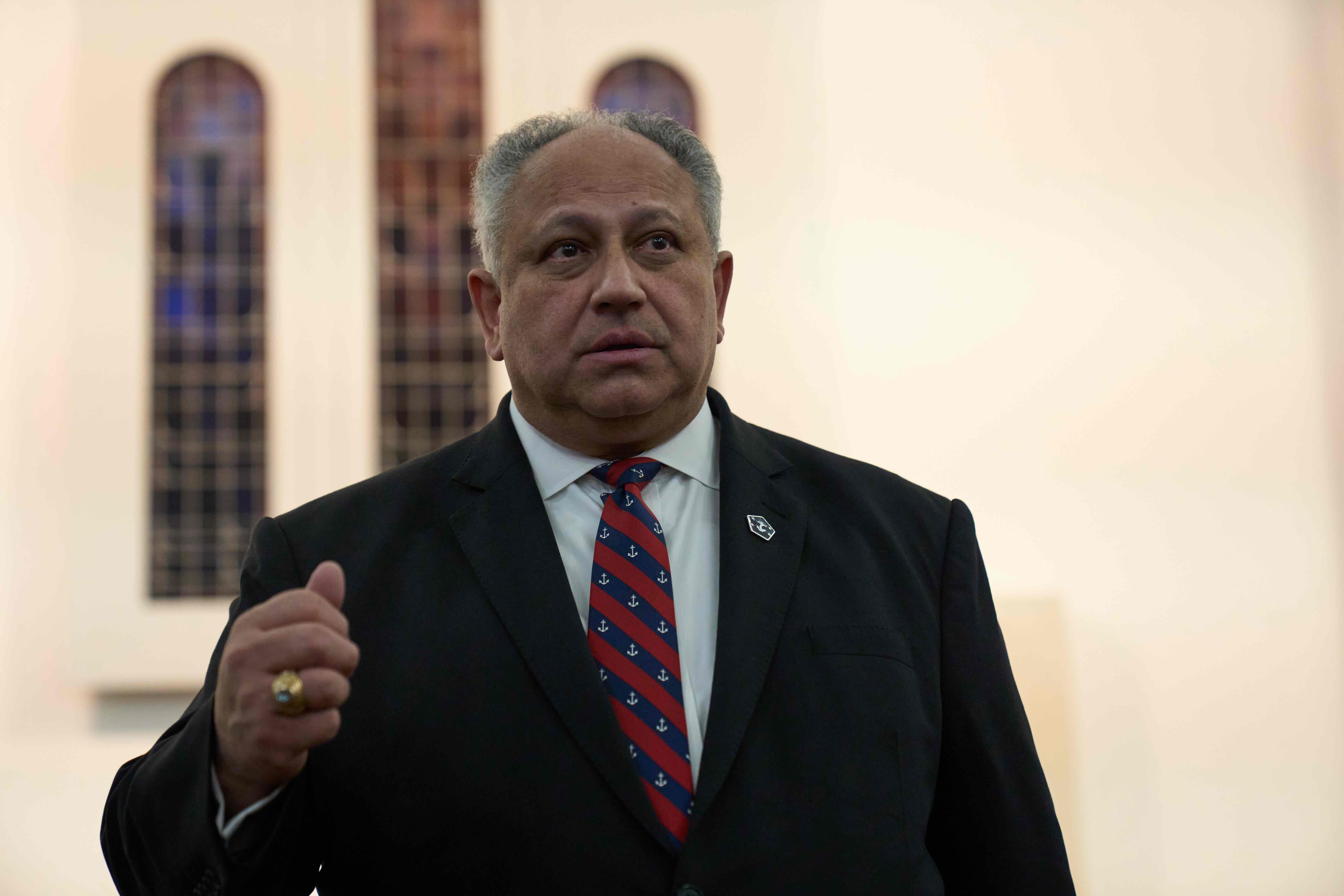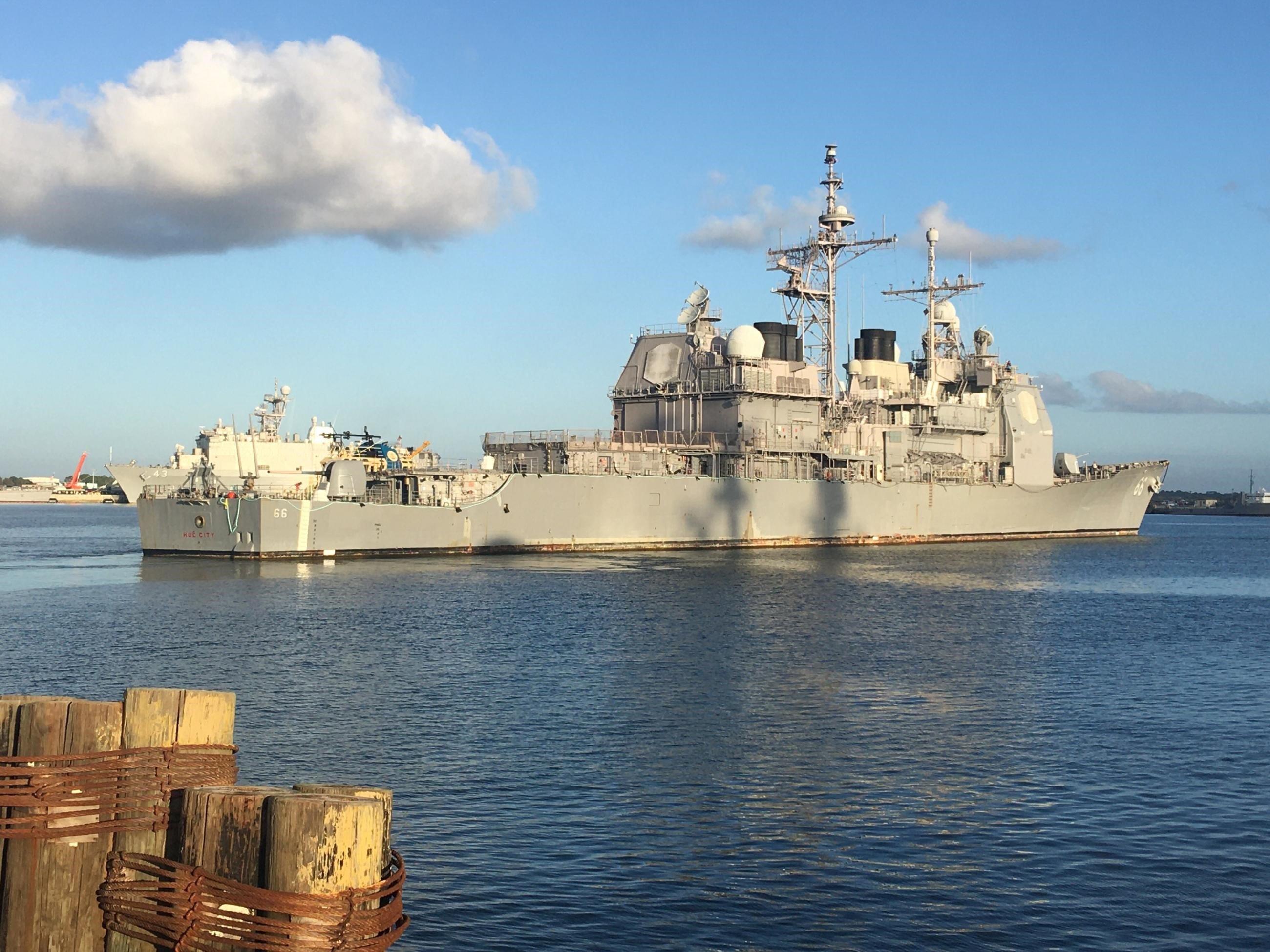
This post has been updated to clarify the timeline for the Flight III DDGs’ entry to the fleet.
A plan to keep the Navy’s guided-missile cruiser fleet operating through the end of the 2030s is struggling as the ships show there’s a very real cost in time and money to keep old platforms around for the sake of having a larger fleet.
The Navy’s Ticonderoga-class cruisers pack a punch with their 122 vertical launching system cells packed with guided missiles, but today their most important role is hosting a carrier strike group’s air defense commander and staff during carrier strike group deployments.
The Navy has for almost two decades struggled to figure out what kind of platforms should replace these CGs as the air defense command ship for the carrier strike group, and several efforts have been canceled or postponed along the way. To buy more time to find a replacement, the Navy modernized 10 cruisers beginning in the 2000s to extend their lives and give them the newest combat capabilities. A second cruiser modernization program that began in 2015 aimed to do the same to seven more.
Now, cruisers in that first group are showing their age, becoming more expensive and difficult to maintain and less reliable to operate as their material condition declines. Those in the second group, five of which are currently in the cruiser modernization program, are also having issues as they require more repair work than the Navy expected – calling into question whether the Navy should keep them for the sake of having a larger fleet or decommission them due to their declining state.
In a budget environment where the military services are increasingly looking to “divest to invest,” or rid themselves of legacy gear to free up money for new equipment aimed at a high-end future fight, the cruiser fleet may not see much support in the upcoming budget cycle, two admirals told USNI News.
Cruiser Modernization Program Challenges
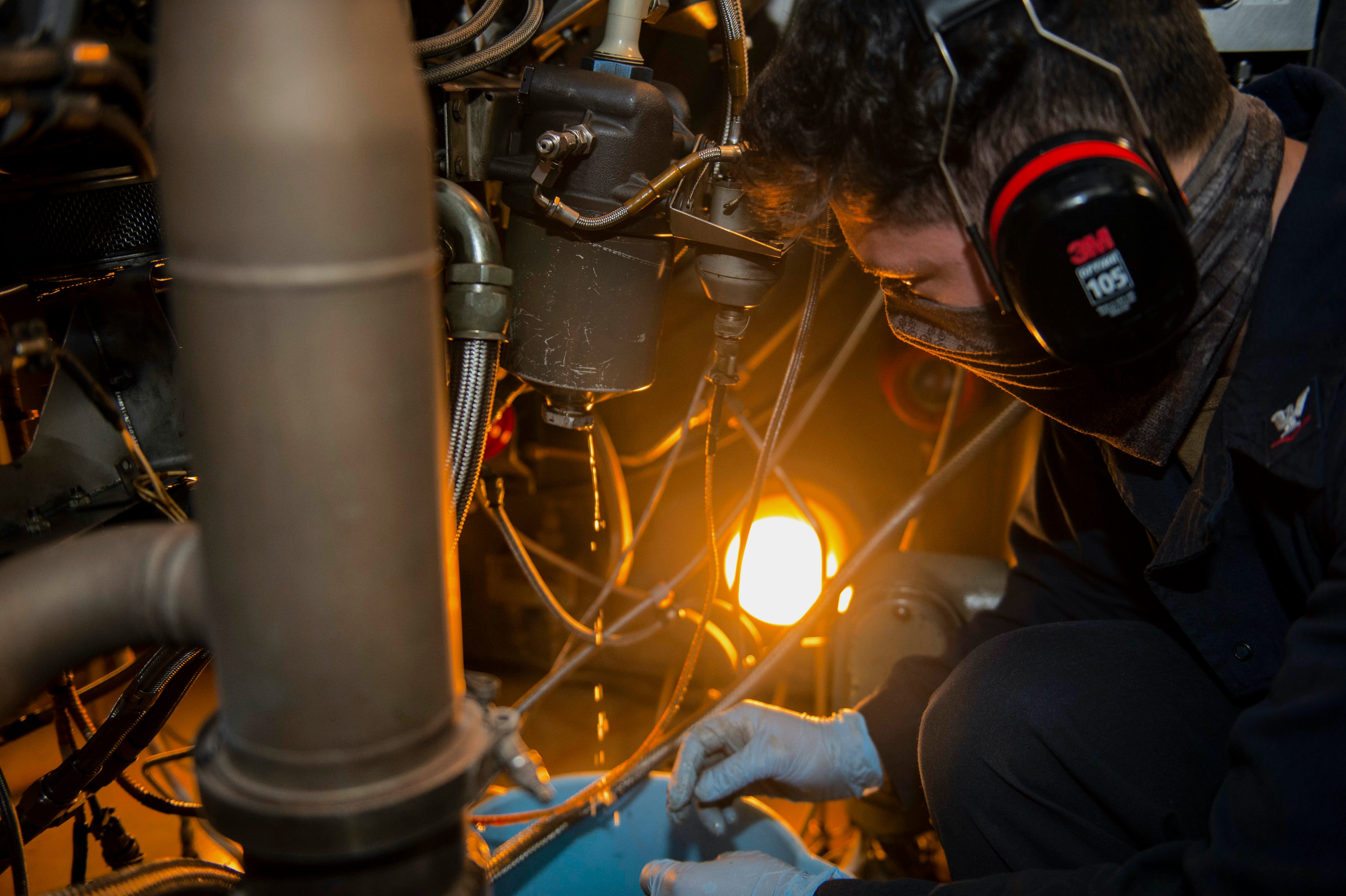
Vice Adm. Bill Galinis, the commander of Naval Sea Systems Command, told USNI News on Friday that five cruisers are currently in the modernization program, and the three that are furthest along have not gone smoothly.
The cruiser modernization program was broken into three phases that could be competed to industry separately, he said. The move was made partly to introduce competition and lower cost in the process and spread the work throughout a private shipyard sector that had been facing an overwhelming workload when the process began. The cruiser mod program has two shorter availabilities – one to rip out equipment and systems, the second to do structural repairs on the ship, especially in the aluminum deck house area – and then a longer availability to modernize the ships.
The ships in that third availability are “struggling,” Galinis said.
“We started these (longer availabilities) back in the October 2018 time frame with USS Cowpens (CG-63) being the first one out in San Diego, followed by USS Vicksburg (CG-69) and USS Gettysburg (CG-64) – in March ’19 for Gettysburg, and then Vicksburg was started in January ’20,” Galinis said.
“What we found in some cases, in particular for the first three ships, Gettysburg, Vicksburg, and Cowpens, was that a lot of the structural work was not – in some cases all the structural work – was not completed during that second availability, which cascaded into the third, into the larger modernization availability. So from a strategic standpoint, we brought in more work than initially planned when we started the program into that last modernization availability. That being said, all three of those ships right now, Gettysburg, Vicksburg, and Cowpens, are in that modernization availability – and I will tell you, they’re struggling through the production phase right now.”
The COVID-19 pandemic is one reason that third and largest availability is running behind, but the poor material condition of the ships and the inability of the workforce to do the repair and reactivation work have also been problems, he said.
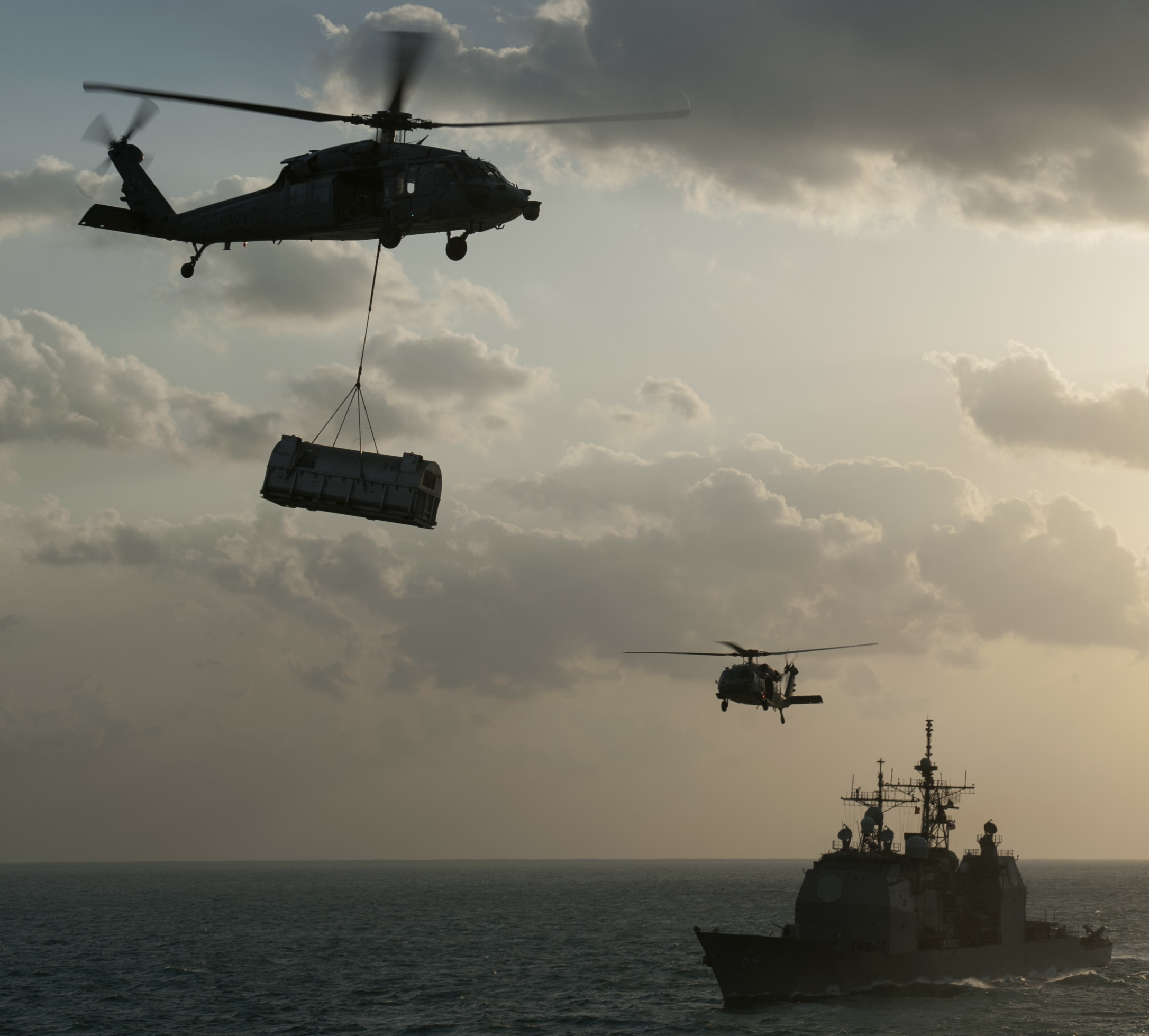
“Number one is the amount of change that we have pushed into the availability, driven principally by, in some cases, the condition of the [hull, mechanical and electrical] plant, the hull in particular. So a lot more structural work than initially anticipated as we got into tanks in some cases that had not been opened for quite some time. Some additional work on the underwater hull portion, including the running gear – and again, in some cases, these ships had not been docked for an extended period of time, so there was more work in that area than initially planned. And then we had some challenges with the main propulsion plant and some additional work in that area. So new and growth work was one of the key drivers,” Galinis said.
On the performance side, Galinis said new construction yards have teams of experts who specialize in getting brand new systems up and running for the first time before handing them over to a ship crew, but maintenance yards don’t have that expertise on hand. Typically a repair yard turns the ship back over to the crew for reactivation, since the crew knows the ship better than anyone else, having sailed it into the repair yard in the first place. However, because the cruiser mod program is so lengthy, with the three-part repair and modernization process, the crews currently assigned to the cruisers have never actually touched the ships’ systems before, and the repair yard doesn’t have the expertise to get the ships reactivated either.
Galinis said Cowpens and Gettysburg are in the reactivation phase now and have been struggling. Some of their hull, mechanical and electrical systems have been down for five years, and it’s been harder than expected to get them back up and running after the modernization availability. Galinis said “there’s a pretty proven process on the sequence of how we actually reactivate these systems” that the Navy and its contractors are going through now, but the repair yards don’t have the in-house expertise they need to successfully execute that work.
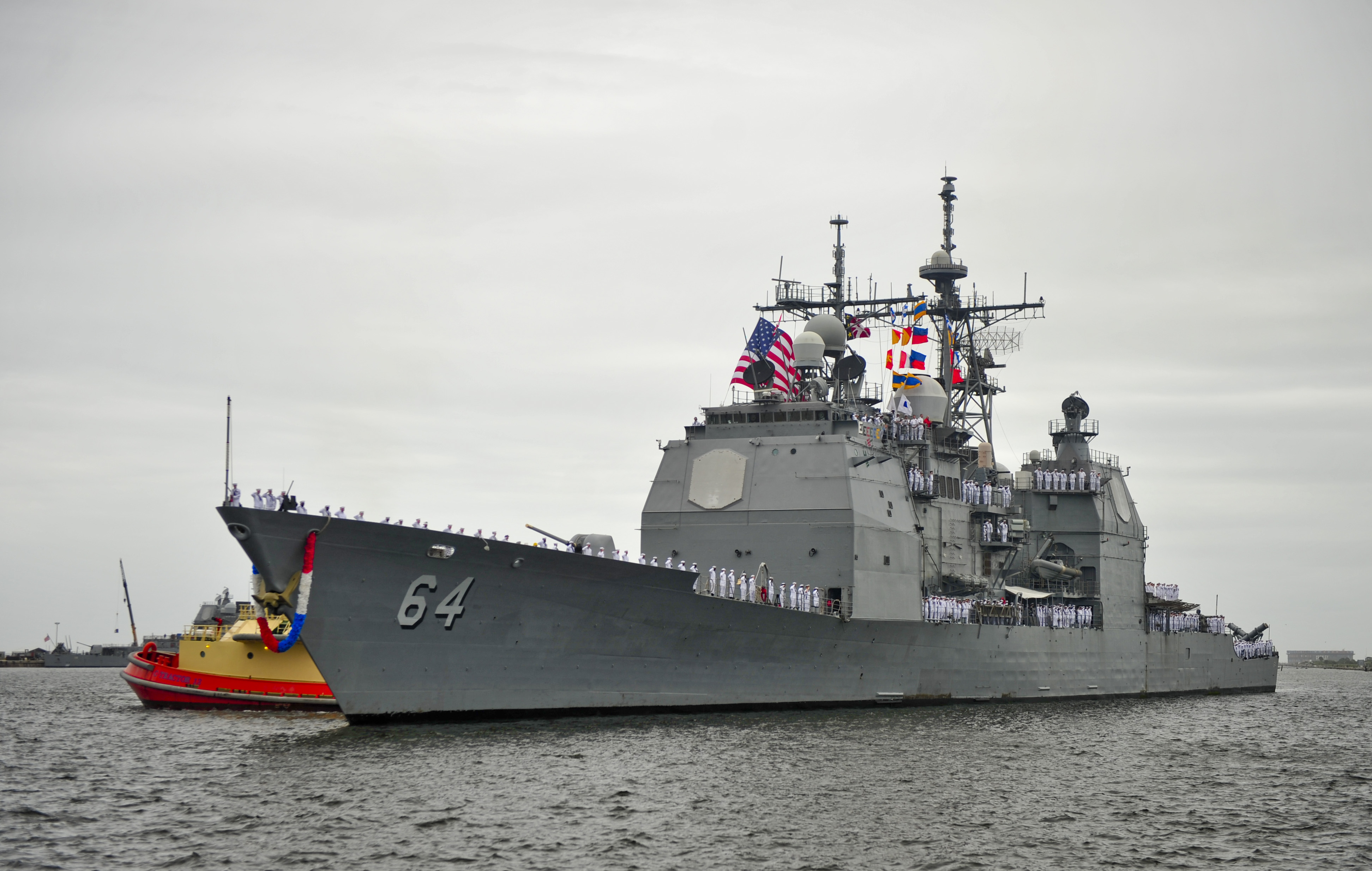
NAVSEA created a four-pronged approach to help get Cowpens and Gettysburg back online. New construction yards are working closely with the ships’ crews to share their expertise. Fleet introduction teams have been deployed, sending senior enlisted sailors in engineering and combat system ranks to help out the crews that have never actually operated these ship systems before. Third-party contractors have been hired to help with smaller repair tasks during the modernization availability, and the regional maintenance centers are sharing their intermediate-level maintenance experts, too.
Galinis did not name which companies were helping out in the reactivation process or as third-party contractors, but USNI News understands that Ingalls Shipbuilding, which built 19 of the 27 Ticonderoga-class cruisers, is assisting in the cruiser mod program.
Galinis said the Navy had learned quite a bit in the first three cruiser mods that could help out with the next two ships in line.
“The fourth ship, USS Chosin (CG-65), which is at Vigor in Seattle, is actually doing quite well. So we have been able to roll a lot of lessons learned – she lagged the first three ships by a period of time, so there was an opportunity to roll some lessons learned, and we’re seeing learning on the fourth ship out at Vigor. And USS Cape St. George (CG-71) really hasn’t gotten into the production phase yet,” he said, referring to that third availability.
Despite lessons learned helping the Chosin availability go better than the first three, two additional cruisers are in reduced readiness status today awaiting the start of their production phase, and the difficulties of the first three ships may lead the Navy to retire USS Anzio (CG-68) and USS Hue City (CG-66) instead of finish modernizing them.
Both ships were included in a list of ships set for decommissioning when the Navy released its long-range shipbuilding plan in December, in the final weeks of the Trump administration.
A new plan will be released in conjunction with the Biden administration’s Fiscal Year 2022 budget request, but Vice Adm. Jim Kilby, the deputy chief of naval operations for warfighting requirements and capabilities (OPNAV N9), suggested it would be hard to find support in the budget for an old ship that’s increasingly hard and expensive to maintain and operate.
“This job is more complex than I think the Navy anticipated for all the reasons Adm. Galinis laid out. So I would have to think hard about inducting more cruisers here because of what we’ve seen so far,” he said during the same interview on Friday.
“I do agree with Adm. Galinis that we’re going to get better, but I think it’s in this overall balance as I’m trying to produce the best Navy for the money that’s provided to us that we can, if that makes sense.”
Why the Navy Needs Cruisers
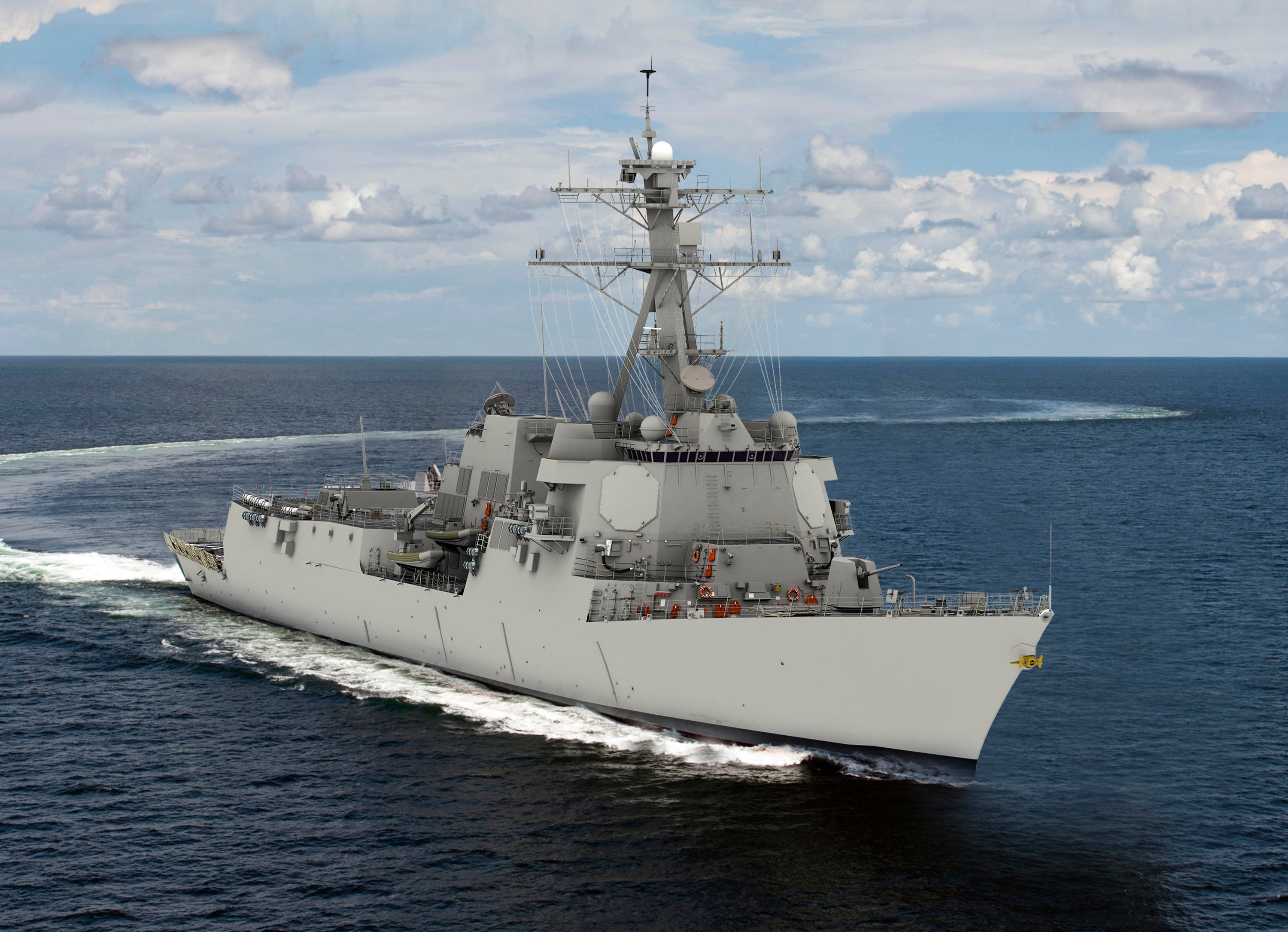
The Navy tried and failed in the late 2000s to develop a cruiser replacement program, and upon the cancelation of the next-generation cruiser CG(X) program. In 2010 the Navy decided instead to use the Flight III Arleigh Burke-class destroyers to serve as the platform to host air defense commander. The Navy has in recent years tried to pursue a large surface combatant – at times called LSC, then DDG Next and now DDG(X) – that could be optimized for that role as well, but those efforts too have run into trouble and seen several delays.
Kilby told USNI News that, first and foremost, he owed the fleet commanders enough ready ships and trained crews so that each carrier strike group could have an air defense commander in its team of escorts. Though that’s an operational requirement, there’s also not much support for hanging on to an old ship that’s declining in reliability and increasing in cost to maintain and operate, so the Navy could well see its fleet of 22 CGs drop to 11 quickly – the Trump administration’s plan saw six decommissioning in 2022, two in 2023, two in 2024 and one in 2026, which would put the fleet at 11 five years from now, matching the congressionally required 11-carrier fleet.
“I guess I’d opine that the conversation we had in December about the shipbuilding plan that was created in conjunction with the last administration: we had an opportunity to make some decisions, to create a force structure that was what I determined the most lethal and robust that we could balance. And that’s my job as the N9, is to try to look at all the capabilities and say, ‘how do we balance that?’” Kilby said.
“So as the budget gets more restrictive, we’ll make similar decisions. Ultimately though, I want to make sure we do one thing, which is to provide an air and missile defense command ship and a trained crew to go execute that mission for our strike groups. So to me, that’s the central theme here, and I’m always going to look for the best ship to do that based on its combat systems and the capability that comes with that.”
The Biden administration is expected to give the Defense Department overall, as the country focuses on health and economic spending related to the COVID-19 pandemic, as well as other priorities such as infrastructure. It’s unclear within DoD whether the Navy under this administration will receive any greater a share of the defense budget than the other services.
Due to a series of decisions by the Navy and Congress, the current plan calls for the air defense commander role to be filled today by one group of 10 cruisers that went through a combat system modernization effort in the late 2000s and now carry the latest and greatest combat system. They are nearing the end of their services lives now – which was extended beyond the original 30 years they were designed for – and though the Navy had considered extending their lives even further, some of these ships are among the first that would be decommissioned under the plan released in December.
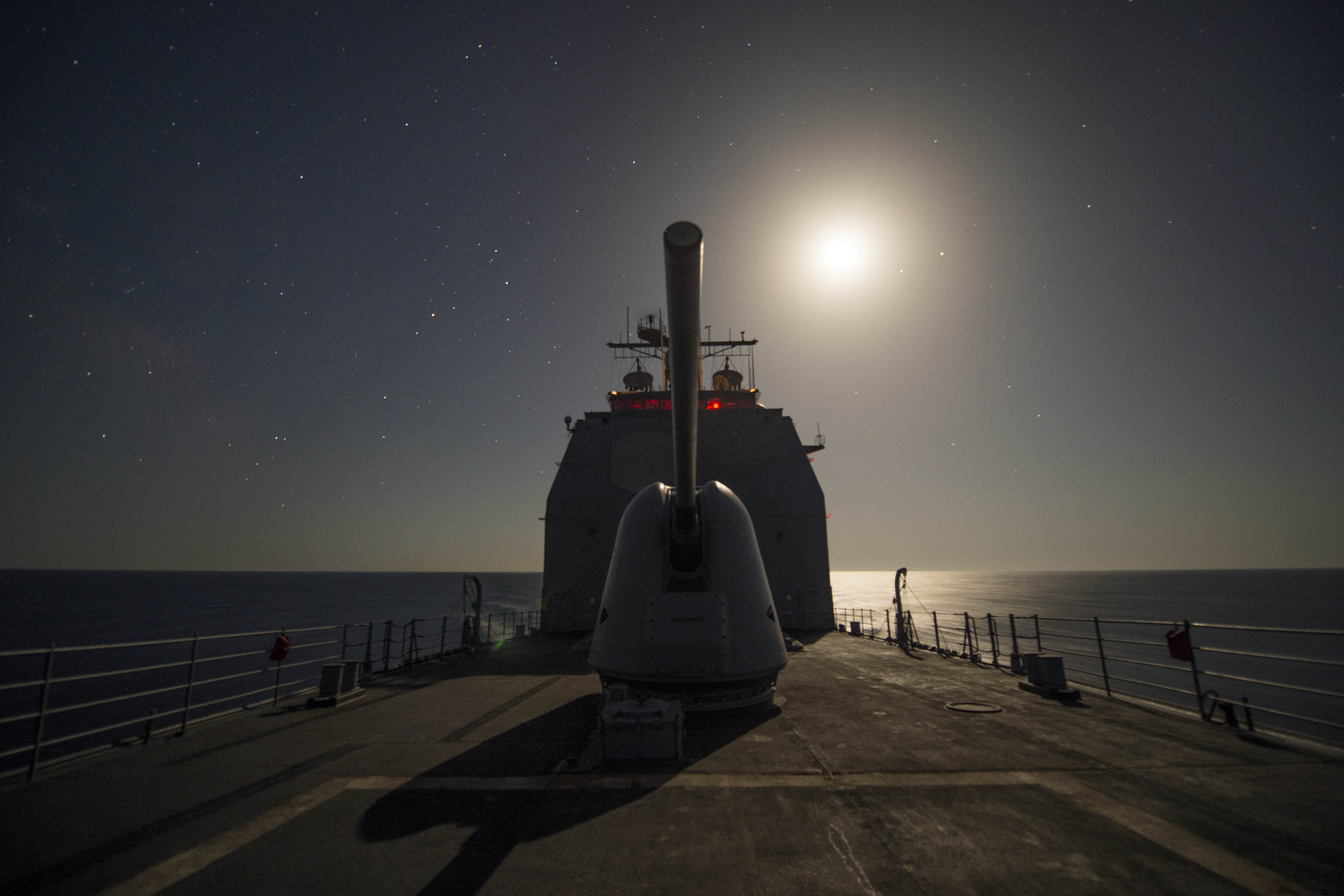
As these ships decommission, the plan was to replace them with the ships coming out of the cruiser mod program, which would then carry out the air defense commander role until the first Flight III DDGs join the fleet and are ready to begin operations at the end of this decade.
However, the oldest cruisers are seeing material readiness issues, including USS Vella Gulf (CG-72), which had to return to its homeport in Norfolk, Va., just days after deploying with the Eisenhower Carrier Strike Group in February due to a cracked fuel tank. During the pier-side repairs, a second cracked tank was discovered. And when the ship tried to depart Norfolk after the tanks were fixed, another issue was discovered in its shaft seal, Galinis explained.
“And so it just shows you that we really need to work on maintaining these ships going forward. I think we can do that to a point, but they are more expensive to maintain than some of our newer ships, as they show their age,” Galinis said.
“And that goes back to one of Adm. Kilby’s earlier points and what the [chief of naval operations] has said, is to really take a look at the force structure that we have now and where we need to divest legacy systems to recapitalize the fleet going forward. And again, this is a hardship class to maintain, principally because of the HM&E infrastructure.”
Kilby said during the interview that “the first cruisers to be modernized have our latest combat system on it. So even though those ships are, in some cases, older than 35 years, they have a Baseline 9 combat system which allows them to perform the air and missile defense commander role exquisitely. However, the ships are old. So at some point, like many of our older systems, we’re paying a lot of money to keep them online and keep them current. So I think that’s the balance piece of it. As long as we meet the requirement to have a ship and a crew that’s trained … to do that air and missile defense commander role, I think that’s certainly something we must do [ahead of the] arrival of the Flight III DDG, which is going to bring a new radar which will allow that air and missile defense commander to be perhaps better in that role because of the new capability that radar brings. That’s my view. So I think the trades, as we move forward, are how much top line do we have? What is our global force management schedule look like? Do we have the cruisers online and the crews trained and aligned to those ships to do that mission? That’s what we’ll have to look at and balance what’s coming down in the Flight III and making sure that we’ve got that lined up. Because that’s going to be what’s in the trade space of future budgets.”
As recently as December, the Navy was considering further extending the service lives of as many as five of the cruisers in that first group of 10 to go through a life extension program.
Kilby couldn’t say much about the upcoming FY 2022 budget, which is still being worked on. However, he repeatedly suggested coming down on the side of keeping just enough cruiser capacity to meet the needs of deploying carrier strike groups, but no more. Asked about Anzio and Hue City’s previously planned induction into the cruiser mod program, as well as extending the lives of any further cruisers, he said, “I think it’s pre-decisional with the budget, but as we work through the final end game of ’22, we’ll certainly work through that. But I do want to say that there is an understanding on my part as the N9 – and I won’t speak for my bosses – about the complexity of these avails, and the length of time it takes, not only because we’ve adjusted the approach that Adm. Galinis laid out, but we also have to address some unfound things as we get into those ships to make them right and get the service life we need out of them. So to me, there is a definite balance, and we should proceed cautiously with what we know about this program, because it’s been very complex in the delivery of the end state.”
Kilby said the first Flight III DDG would deliver from the builder in 2025 and then go through extensive testing in the fleet through 2027 to ensure the new capability was ready to protect an aircraft carrier from incoming missiles.
“So the challenge will be to manage this group of ships (the oldest cruisers), to finish the availabilities that Adm. Galinis laid out and get those ships out of modernization so they can replace those earlier ships, and then align that schedule with the global force management schedule for the fleet. And that’s what we’re going to work on,” he said.
Congressional Challenges
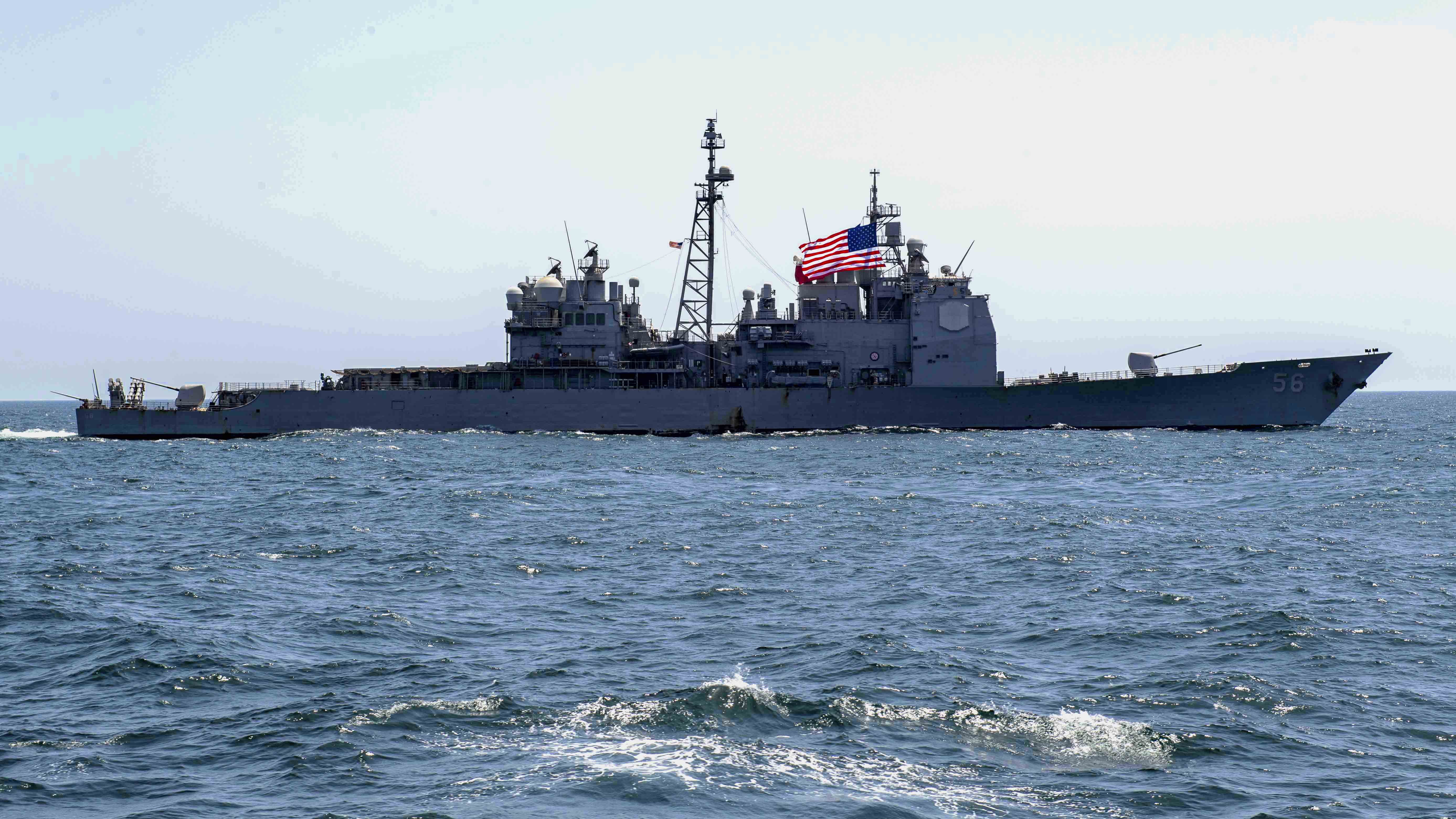
Congress will get the final say in the matter. If the Navy under the previous administration was leaning more in the direction of doing whatever it took to grow the Navy, and the services under the Biden administration are leaning more in the divest to invest direction, Congress has made clear in recent years it believes the Navy needs a higher ship count. The sentiment appears on both sides of the aisle, and even last month Rep. Elaine Luria (D-Va.) specifically called out the cruisers as an example of an older ship that should be further extended until the Navy can bring newer small and unmanned combatants into the fleet.
The Navy and Congress have sparred over the fate of the cruisers for the better part of a decade now. After the 2011 sequestration’s across-the-board budget cuts, the Navy hoped to achieve some savings by putting 11 of the 22 cruisers into a reduced operating status, operating the modernized half of the fleet, and then upgrading the laid-up ships to achieve a just-in-time replacement model as the first 11 aged out of service. Congress said no.
The two ultimately agreed on a 2-4-6 cruiser mod plan, where two cruisers a year would be inducted into the modernization program, which would last no more than four years per ship, and no more than six ships would be in the program at any given time. A small number were allowed to be put into reduced operating status until their induction in the program, keeping more ships available to the fleet and limiting the cost-savings the Navy had hoped to see.
Last spring, the Navy asked to retire four cruisers and the first four Littoral Combat Ships early, in a bid to divest the least capable ships in the fleet to invest that money elsewhere – and Congress was similarly opposed to shedding capacity during a time they wanted to see the fleet grow.
Though the Trump administration released a FY 2022 budget proposal and shipbuilding plan in December, in a move to lay down a final marker to compare its priorities to the incoming Biden administration’s, it will ultimately be the Biden team that sends a proposal to the Hill this spring with its pitch on the cruisers and other legacy systems. Though lawmakers have shown little appetite for allowing a short-term drop in fleet size even if it means freeing up funds for the development of the small combatants, unmanned systems, hypersonic weapons and more that will be the heart of the future fleet, Kilby and Galinis offered something of an opening argument for allowing the Navy to finally rid itself of the legacy CGs.
“Being a former cruiser sailor myself, we have had an increasing number of challenges with our tanks, our fuel service tanks and our compensating tanks. So to me, that’s something we’ve got to watch carefully and make sure we know that they work,” Kilby said.
“On my last deployment in 2017, my cruiser had to take several stops for voyage repairs to fix that system to ensure that we were confident in it. So I think we really have to be aware of the HM&E status of those ships and pace them accordingly. That’s my N9 (and) former cruiser sailor answer.”
“I would tell you on the surface combatant force that we have right now, the cruisers are hands down the most difficult platform to maintain. And they’re hard to maintain because of the HM&E infrastructure,” Galinis said.
“As Adm. Kilby indicated, they bring an incredible combat capability to the fleet with that air defense mission commander capability and what they provide in the force. But from a maintenance perspective, the hull structure, and in particular the deckhouse structure, is worn.”





